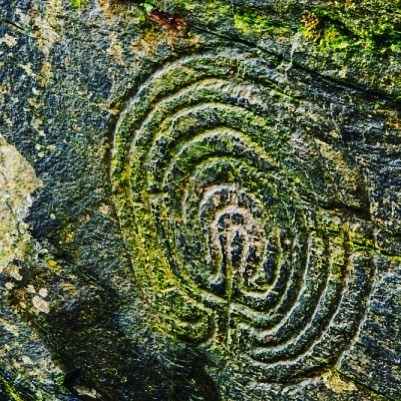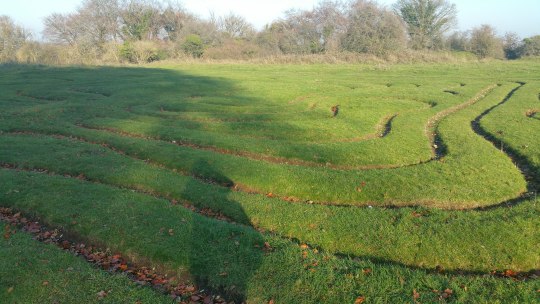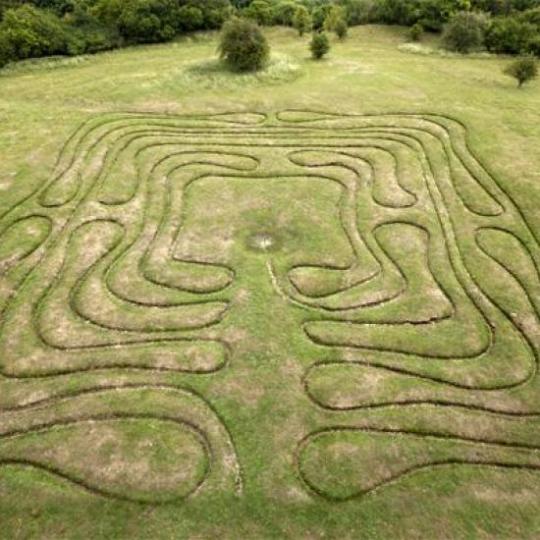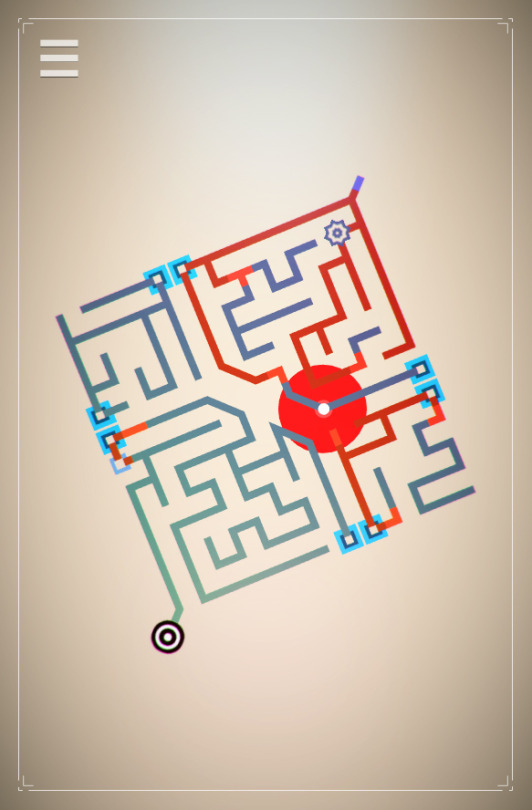#mizmaze
Text
Big Tits Teacher in Action with a student
XEmpire Lily Labeau Loving that BBC Penetration in Stockings
Free lalin girl sex pics
Xxx free movietures latino gay lads and sex of sexy teens school Work
Indian Twins Strip Fantasy Boobs Pussy Play
Athen Cho Swe
Mia Rider interracial cuckold
Teen boy hunks gay first time Straight fellow heads gay for cash he
Cute white straight guys sucking pussy gay Colin has never performed
Smbj tsMia
#ungospelled#unbookishness#crossleted#tuberculinize#parthenogonidium#sided#adversity#petition-proof#Cherie#lendee#mantras#shoehorns#faon#burly-headed#mizmaze#nutmeg#misbranded#Annissa#innovatively#Darden
0 notes
Text
Labyrinth Or Maze? (2)
The history of #labyrinths and #mazes and why we confuse the two
Early and mediaeval Christians adopted two-dimensional labyrinths in their iconography, usually in the form of wall or floor decorations, the oldest known, at the Basilica of Reparatus in Orleansville in Algeria, dating from the 4th century AD. Their purpose is unclear, some suggesting that they depict the twists and turns that beset the Christian life, others that they map out a penitential…

View On WordPress
#Drych y Prif Oesedd#Hampton Court maze#Labyrinth#Longleat#Mappa Mundi#maze#mizmazes#Shepherd’s race#the Basilica of Reparatus#Theophilus Evans#Troy town
0 notes
Video
The Fictions of Light by Russell Moreton
Via Flickr:
Mizmaze St Catherine's Hill. Re-Imagining the Immaterial and the Concrete Talbot once described the invention of photography as “a little bit of magic realised”. In 1845, in a similar vein, the Athenaeum, in its review of The Pencil of Nature, described it as “A wonderful illustration of modern necromancy” and wondered at the fact that “photography has already enabled us to hand down to future ages a picture of the sunshine of yesterday, or a memorial of the haze of to-day.” “impressed by the agency of light alone” blog.nationalmediamuseum.org.uk/a-z-of-photography-willia... The Pencil of Nature by William. Henry Fox Talbot www.gutenberg.org/files/33447/33447-pdf.pdf
#maze#St Catherine's Hill#Winchester#analogue#Russell Moreton#visual art#Henry Fox Talbot#necromancy#visual fine art#spatial practice#research creation#ecology of experience#useless flickr uploader#flickr
1 note
·
View note
Photo

What does this symbol mean?? People have all kinds of silly theories. My new videos tomorrow gets to the bottom of things. Frankly, i find all the Neolthic datings of these to be dubious. Seems more like a bronze age symbol which developed a new meaning in the Migration era in Northern Europe, then was revived once in the medieval era and again in the modern era. The video will go live tomorrow night on Survive the Jive! #TroyTown #labyrinth #mizmaze #juliansbower (at Tintagel, Cornwall) https://www.instagram.com/p/BsiwtKIgCd-/?utm_source=ig_tumblr_share&igshid=m38ga4czoedp
10 notes
·
View notes
Photo

Mizmaze... • • #mizmaze #labyrinth #maze #mazerunner #countryside #countrysidewalk #ironage #skyporn #clouds #cloudporn #17thcentury #hillclimb #18thcentury #history #hampshire #loveclouds #green #hillfort #sssi #summer #stcatherineshill #winchester #historic #iphone11 #mazeworld #naturereserve #lovethis (at St. Catherine's Hill, Hampshire) https://www.instagram.com/p/CBnzWwBB9r_/?igshid=1pssnvandlz81
#mizmaze#labyrinth#maze#mazerunner#countryside#countrysidewalk#ironage#skyporn#clouds#cloudporn#17thcentury#hillclimb#18thcentury#history#hampshire#loveclouds#green#hillfort#sssi#summer#stcatherineshill#winchester#historic#iphone11#mazeworld#naturereserve#lovethis
0 notes
Photo

Simon Casson (British, b. 1965)
Vaor of the Mizmaze, 2021
Oil on canvas
71 notes
·
View notes
Conversation
Pluto: Your dad grounded you? Are you in kindergarten?
Sibbi: I dunno about you guys, but my parents don’t play.
Frisco: My parent abandoned me, and is wanted for revolutionary crimes.
Ry: I never had parents. I was made from desert sand and the blood sacrifice of a thousand goats.
Mizmaze: Dead.
Khronos: Complicated.
Mori: One of mine tried to kill me.
Pluto: ...You all need some serious therapy.
#pluto (paracosms)#sibbi (paracosms)#frisco (paracosms)#ry (paracosms)#mizmaze courvoisier#khronos (paracosms)#mori (paracosms)
0 notes
Text


A mizmaze is a landscape element made by cutting a design directly into the earth. It is more properly classified as a labyrinth, since the lines never intersect, and there are no dead ends. The origins of the one atop St. Catherine's Hill in Winchester are unclear; theories about its creator and his reasons range from the Bishop of Winchester making a devotional site for pilgrims, to a 17th century student of the Winchester School as punishment for failing his exams.
33 notes
·
View notes
Note
Prompt: Canon divergence. Natasha is kidnapped and tortured by Ultron. Bruce is ready to go green, and Tony is wrecked with guilt.
I’m sorry for the wait–I hope this is alright, and thank you for the prompt!
AO3
Fanfiction
What Goes Up Must Come Down
Bruce awakens in a stiff bed, in a room not his, in a place that is not Sokovia nor Ultron’s lair. An ache radiates from his brain to his skull, diffuses into his bones and tightens every muscle. Thinking and breathing are both trials. He has to endure the discomforting pressure of it in order to piece together where he lost himself in exchange for the other guy.
The first place his mind goes is to Natasha. He was supposed to get her out.
Completely unsure of who else, if anyone, is in the room, he asks, “Where…” After a cursory survey, he finds Tony at his bedside. “Where’s Nat?”
Tony’s posture—how he’s hunched, condensed into an Atlas with the world’s weight a shadow on his shoulders—it raises questions Bruce doesn’t want answers to. He doesn’t want those answers to be possibilities. Then he remembers.
The vast spectrum of red—organic, bright, glaring no matter how dry. A mizmaze of it—streaks, drops, stains—behind bars of a cage. Her, the motionless source.
Some nearby monitor beeps, warning of his escalating pulse. He doesn’t need it to tell him what he knows, doesn’t need the exacerbation. Except maybe he wants it, because that would push him faster into his other form, and nothing could stop the monster inside from ripping Ultron apart down to his wires. He’d go beyond that—he’d destroy every last database, screen, monitor, and hard drive to eradicate him. It wouldn’t change what happened to Natasha—what Ultron did to her—but maybe, surely, if he let Hulk undigitize the planet, the chances of that brutality ever happening to her again would decrease. There had to be some saturation point when tyrants on this earth would stop inflicting their damage upon her.
“Hey.” Tony’s voice comes from a distance. It’s like trying to sift marble through a sieve. The chirping of the monitor increases in tandem with his pulse and his willingness to compromise with the beast inside. Tony’s not so on board with that. “We got Ultron. You got Ultron, the little witch got Ultron, the superbot got Ultron—everyone got Ultron.”
He teeters on the brink, where every quickened breath is a straight injection of oxygen that his heart takes and pumps out to the latent muscles under his skin. It prepares to make him a monster and he has to tamp it down, his brain has to be strong enough to deny this, but that requires him to make certain of something. He strains to ask, “What about Nat?”
Read the rest on AO3/Fanfiction!
#ask Avian#avianink#brutasha#brucenat#bruce banner#brucenat fanfiction#brutasha fanfiction#science bros#sciencebros#what's the tag#bruce pov#general fic#Avengers#Marvel Avengers#avengers fic#Marvel Movies#mcu#marvel cinematic universe#marvel#marvel cinematic multiverse#tony stark#canon divergence#age of ultron#if you don't like it that's okay because there's probably gonna be a chapter two since people on ao3 and fanfiction are already requesting#which is so flattering!!#and baffling at the same time#like it's wild that people read my stuff#ALSO TO THE PEOPLE WHO HAVE TAGGED ME IN TAG THINGS THANK YOU#I ADORE YOU
6 notes
·
View notes
Text
How walking a labyrinth can trace a route to self-knowledge | Aeon Essays
Be amazed Before it became a staple of videogames, the maze was a test of reason and courage, a way to find yourself by getting lost
On a chalk down beneath an iron-age hillfort and a grove of beech trees near my home in Hampshire in the south of England, a labyrinth has been cut into the turf. It looks almost like a tinted engraving. The short-cropped grass pillows up around the narrow pathways as if they had been pressed into something soft, and in the right light the milky soil shines through.
On the morning of my wedding, I walked the folded path to its centre. I say ‘walked’, but I was in a bit of a rush so it was more a trot – but I wanted to finish the thing, so I traced the path back out again. I could never have gotten myself lost. In the Mizmaze there is one entrance and one exit, and one route between them: by one definition this makes it a unicursal ‘labyrinth’ rather than a multicursal ‘maze’, which presents choices between alternative paths.
(via How walking a labyrinth can trace a route to self-knowledge | Aeon Essays)
1 note
·
View note
Text
Types of Kids Puzzles Games
What is a Puzzle?
Often definition is:" A puzzle is a problem or enigma that challenges ingenuity." In a basic type of puzzle you piece together objects in a logical way in order to come up with some shape, picture or solution.
Puzzle games never seem to age, specially today with computer, WWW and online games. Most puzzle games are basic in graphics but are very addictive, sometimes leaving you playing for hours.
There are many types of puzzles. Some of them are very popular, and some are not. Puzzles that have been created until now can be divided into several main categories.

Jigsaw puzzles are a well known and popular type of puzzle. A jigsaw puzzle is a puzzle that requires the assembly of numerous small pieces, and each piece has a small part of a picture on it. When all pieces are complete, a jigsaw puzzle produces a complete picture. There are two dimensional, three dimensional (Puzz-3D is the brand name of three-dimensional jigsaw puzzles), and recently online Jigsaw puzzles have appeared.
Word puzzles like Crosswords and Anagrams are the most popular type. A crossword is a word puzzle that takes the form of a square or rectangular grid of black and white squares. The goal is to fill the white squares with letters, forming words by solving some type of question or clues which lead to the answers. The black squares are used to separate the words or phrases. An Anagram is a type of word play puzzle, and by rearranging the letters of a word or phrase, you produce a new word or phrase by using all the original letters only once. Learning Toys Games
Logic puzzles include many different types of puzzles. Logic puzzles are math-based, like the well known and popular puzzle, Sudoku. Besides Sudoku, other logic-based number placement puzzles include Nonograms (or Pixel Puzzles), Kakuro, Impossible Puzzle, and The Tower of Hanoi.
Combination puzzles are a variety of mechanical puzzles that consist of a number of pieces which can be manipulated into different combinations by a group of operations. The most famous of these puzzles are the original Rubik's Cube, and the Tangram puzzle, where the objective is to form a specific shape with all seven pieces.
Tiling puzzles are puzzles which involve two-dimensional packing problems where a number of flat shapes have to be assembled into a larger shape without overlaps. In some tiling puzzles you must first dissect a given shape, and then rearrange the pieces into another shape, or dissect a given shape while fulfilling certain conditions. Types of tiling puzzles include Conway puzzle, Domino tiling, and Puzz-3D. Most Popular Toys Games
Construction puzzles are solved by assembling any puzzle from a given set of pieces in a certain way. This main category includes any of the stick puzzles, many tiling puzzles, and also some mechanical puzzles. In online games puzzles representative of this type are Bridge Builder, The Incredible Machine, and Pipe Dream.
Transport puzzles are puzzles in which the player pushes boxes around and tries to achieve the aim of the game. The most popular representative for this type of puzzle is the Sokoban puzzle. Other examples of this type of puzzle are cube puzzles and sliding puzzles.
Picture puzzles are popular with children, and include Connect-the-Dots and Spot the Difference where two versions of an image are shown side by side, and you must spot the difference.
Sliding puzzles are solved by sliding blocks without lifting any of the pieces of off the board. Most people are familiar with N-puzzle (or. Fifteen puzzle), where you slide flat pieces along a board to establish a certain end-configuration.
Tour puzzles are puzzles where players make a trip around some type of game board. The most popular tour puzzles are Knight's Tour, Mazes (or labyrinths), Mizmazes and Logic mazes.
Mechanical puzzles include the Rubik's Cube, disassembly puzzles, interlocking puzzles, and impossible objects (like Ship in a Bottle).
Here you can find most of these types of Educational Puzzle Games for kids, like Puzzles Mania, Super Math SPY, Kids Puzzle Games, Stepping Stones and more.
0 notes
Text
Mizmaze !


Screenshots from the video game I’ve been working on for some months... !
Check out www.facebook.com/mizmazegame !
0 notes
Video
The Fictions of Light by Russell Moreton
Via Flickr:
Mizmaze St Catherine's Hill. Re-Imagining the Immaterial and the Concrete Talbot once described the invention of photography as “a little bit of magic realised”. In 1845, in a similar vein, the Athenaeum, in its review of The Pencil of Nature, described it as “A wonderful illustration of modern necromancy” and wondered at the fact that “photography has already enabled us to hand down to future ages a picture of the sunshine of yesterday, or a memorial of the haze of to-day.” “impressed by the agency of light alone” blog.nationalmediamuseum.org.uk/a-z-of-photography-willia... The Pencil of Nature by William. Henry Fox Talbot www.gutenberg.org/files/33447/33447-pdf.pdf
#maze#St Catherine's Hill#Winchester#analogue#Russell Moreton#visual art#Henry Fox Talbot#necromancy#visual fine art#spatial practice#research creation#ecology of experience#useless flickr uploader#flickr
1 note
·
View note
Text
Get lost in Britain’s best mazes at stately homes
From mystical labyrinths to planted puzzles of twists, turns and dead ends in stately home gardens, Lawrence Alexander gets lost in Britain’s best mazes
There’s a scene in Jerome K. Jerome’s classic Three Men in a Boat where Harris, one of the three friends, offers to show the other two around the maze at Hampton Court Palace. It is, he claims, so simple it seems hardly worth the two pence admission charge, but admits the only time he ever went in he lost an entire party of people – including the maze-keeper – within its hedges.
We still tend to think of mazes as frothy pastimes for family days out. Maize mazes crop up in farmers’ fields, giant puzzle mazes are found in the grounds of stately homes and, of course, Hampton Court’s maze still confounds visitors.
Labyrinth or maze?
A labyrinth carved into Rocky Valley at Tintagel in Cornwall. Credit: Joan Gravell/Alamy
According to tradition, labyrinths are ‘unicursal’, consisting of a single pathway with no dead ends or deviations. As long as you follow the path you will find the centre. Mazes are generally ‘multicursal’, with as many dead ends and paths as possible to confuse the visitor. As a further complication, the famous ‘labyrinth’ of Greek mythology, constructed by Daedalus to incarcerate the monster Minotaur, would have needed to be a multicursal maze to be effective.
The forebears of mazes – labyrinths – have mystified the world since time immemorial, and their true purpose is often obscure. The Rocky Valley labyrinths at Tintagel in Cornwall – a pair of mysterious carved symbols – could be 4,000 years old, though some argue the tools needed to create them would make them at their oldest Celtic and even, possibly, 18th century.
Ancient petroglyphs, Roman floor mosaics, early English carvings and medieval church floors all point to labyrinths having a deeper, devotional meaning. They appear over doorways, on church bells and on all manner of everyday objects – coins, stoneware, even a laundry mangle-board – as talismans against evil spirits.
A labyrinth on Bryher, the Isles of Scilly. Credit: David Chapman/Alamy
Perhaps most intriguing of all are the labyrinths we can physically enter ourselves, whether roundels of small boulders on a beach on the Scilly Isles or a turf-cut maze in a country house garden. The earliest surviving ‘walkable’ labyrinths in Britain are found in Roman mosaics, either as key-shaped borders or entire floors. There are five recorded in Britain, but they were so popular is it likely there were many more.
Mizmazes
Just eight ‘ancient’ turf mazes survive. They are known by many names, from mizmaze and mazle to Shepherd’s Ring, Maiden’s Bower, Robin Hood’s Race and, often, Troy Town or Walls of Troy, as legend holds that the walls of the ancient city of Troy were deliberately built in a confusing way.
The mysterious mizmaze on Breamore Down, Hampshire, is in a yew-grove near a Bronze Age burial mound and is inaccessible by car. Its paths follow the medieval Christian pattern, matching that of the nave at Chartres Cathedral in France. Local folklore suggests the mizmaze was built by the nearby monks of St Michael’s Priory, who would crawl along it as penance or in substitute for a pilgrimage to Jerusalem.
Thought to be from the 18th century, another mizmaze at St Catherine’s Hill, Winchester is the only surviving square-shaped ancient turf maze. It rises slightly to the north of the village of Chilcombe, which has traces of an ancient Iron Age fort and a chapel dating to around 1080. As local tradition has it, the maze was created by a schoolboy in detention from Winchester College, but over the centuries the story has grown so that in the same, clearly extra-long detention, he also composed the school song Dulce Domum before drowning himself in the river Itchen.
The house with two mazes
The turf maze at Saffron Walden. Credit: Philippe Hays/Alamy
Maze fans could do worse than head to Saffron Walden in Essex, which boasts two historic examples of mazes from different eras. On the town’s grassy common lies the largest surviving ancient turf maze in the world, a whopping 46m by 33.5m, though legend suggests it is merely a copy of a much larger maze.
The maze was nearly lost in 1814 when a landowner tried to enclose the common, but the intervention of local banker and maze fanatic Atkinson Francis Gibson saved it. Not everyone was as keen to take care of the maze: the ash tree that once grew at its centre burned down during a particularly rumbustious Guy Fawkes celebration in 1823.
As well as being a saviour of mazes, Gibson was also the founder of the delightful Bridge End Garden, in which, around 1840, his son Francis did his father proud by building a fine yew-hedge maze.
Hedge mazes
Hedge mazes had been all the rage during the Renaissance, when they were a symbol of wealth. Particularly popular in France and Italy, puzzle mazes were purely for fun – as well as a place for secret liaisons away from prying eyes. King Henry VIII had one at Nonsuch Palace in Surrey, while the reigns of Queen Elizabeth I and James I saw mazes popping up everywhere, featuring practical jokes such as dead ends and surprise water jets.
Where space was at a premium the maze craze was reflected in Tudor knot gardens. Puzzle mazes fell out of fashion in the 18th century, dug up to create the sleek lines in the landscape made fashionable by Lancelot ‘Capability’ Brown, but by the 19th century the tide was turning again.
Saffron Walden’s hedge maze in Essex, constructed in the Italian Renaissance style, was originally dotted with ornaments intended to fool the visitor into wandering the wrong way. By the mid-20th century, the garden had become an overgrown wilderness – until the next maze revival in 1984, when an archaeological investigation unearthed the original paths. The maze was replanted and opened by Francis Gibson’s great-great grandson, Anthony Fry.
World’s oldest maze
The maze at Hampton Court Palace. Credit: Historic Royal Palaces
Britain’s most iconic hedge maze, at Hampton Court, is also the world’s oldest, dating back to around 1690. Its longevity is perhaps thanks to the fact that during Capability Brown’s long tenure at the palace, he was ordered, in no uncertain terms, to leave the maze alone.
Commissioned by William of Orange, the maze was planted as part of a formal garden known as ‘The Wilderness’ – not an uncultivated area as the name suggests, but a place to wander. Its unusual trapezoidal shape covers a third of an acre and feels bigger inside than it looks from outside. Sadly, a sister maze, made from espaliered trees, has since disappeared.
Practical jokes, coiled snakes and a royal creation
The maze at Glendurgan Garden, Cornwall. Credit: National Trust Images/John Millar
Another of Britain’s historic mazes is to be found at Hever Castle in Kent, formerly the home of Anne Boleyn, and in Edwardian times the seat of William Waldorf Astor. The splendid yew maze in the castle grounds, planted in 1905, has hedges more than eight feet high and it supposedly marks the spot where Henry VIII courted his second wife. Hever’s modern water maze, with its surprise jets that soak visitors, revives another maze tradition: the practical joke.
The classic maze follows a grid layout, but some use curved pathways to confuse visitors. The maze at Glendurgan Garden in Cornwall, planted in 1833, is shaped like a coiled snake nestled into the valley. Unusually, the hedges are cherry laurel, with palm trees at the corners providing an exotic touch.
The maze at Longleat comprises almost two miles of pathways. Credit: Jason Hawkes
The giant maze at Longleat in Wiltshire is also curvy rather than linear, with twisting paths designed to disorientate. What it lacks in history – it was planted in 1975 – it certainly makes up for in scale, with 16,000 yews and almost two miles of pathways.
Today, our fascination in mazes shows no sign of waning, and they are a regular weapon in the garden designer’s armoury, cropping up in private gardens and public spaces alike.
One of Britain’s newest was the brainchild of His Royal Highness The Prince of Wales, who, inspired by childhood memories of the maze at Sandringham, commissioned a hedge maze at Dumfries House in Ayrshire in 2016. It seems there’s no escaping the enduring appeal of a classic maze, even for a prince.
Book ahead
Saffron Walden
You can stroll between the town’s three mazes, from the turf maze on the common to the Italian Renaissance-style hedge maze in Bridge End Garden, via the modern tiled example in the Jubilee Garden. Open year-round.
Hampton Court Palace
This world-famous maze has entertained visitors for centuries. Can you beat the average time it takes to reach the centre: 20 minutes? Open year-round.
Hever Castle
The castle boasts two mazes set in beautiful gardens. The historic yew maze has a quarter of a mile of pathways, while the water maze is a series of concentric stepping-stone circles set over water, with false steps that shoot jets of water; bring a towel. Main maze open year-round; water maze end of March to October.
Glendurgan Garden
Set in a peaceful valley in Cornwall, this subtropical garden’s maze is built on a slope, allowing you to either tackle the maze yourself or sit opposite and watch others puzzle their way through. Open Tuesday to Sunday mid-February to October.
Longleat
It takes visitors anything up to 90 minutes to make their way to the centre of this complex maze. An observation tower at the heart of the maze marks the finish. Open year-round.
The post Get lost in Britain’s best mazes at stately homes appeared first on Britain Magazine | The official magazine of Visit Britain | Best of British History, Royal Family,Travel and Culture.
Britain Magazine | The official magazine of Visit Britain | Best of British History, Royal Family,Travel and Culture https://www.britain-magazine.com/attractions-2/get-lost-in-britains-best-mazes-at-stately-homes/
source https://coragemonik.wordpress.com/2019/04/28/get-lost-in-britains-best-mazes-at-stately-homes/
0 notes
Photo

Yesterday’s Iron Age wanderings... • • #glorious #gloriousday #beautiful #beautifulday #countryside #countrysidewalk #ironage #skyporn #clouds #cloudporn #bluesky #hillclimb #fairweather #cirrus #hampshire #loveclouds #green #hillfort #sssi #latespring #stcatherineshill #winchester #whataview #iphone11 #mizmaze #naturereserve #lovethis (at St. Catherine's Hill, Hampshire) https://www.instagram.com/p/CA9zRBKB9Xd/?igshid=174hdmgfnjnl0
#glorious#gloriousday#beautiful#beautifulday#countryside#countrysidewalk#ironage#skyporn#clouds#cloudporn#bluesky#hillclimb#fairweather#cirrus#hampshire#loveclouds#green#hillfort#sssi#latespring#stcatherineshill#winchester#whataview#iphone11#mizmaze#naturereserve#lovethis
0 notes
Photo

Simon Casson (British, b. 1965)
Nighst Mizmaze, 2021
Oil on canvas
60 notes
·
View notes
